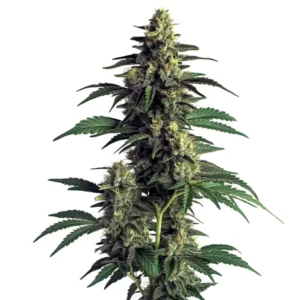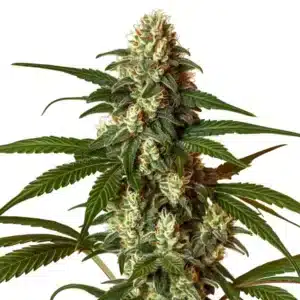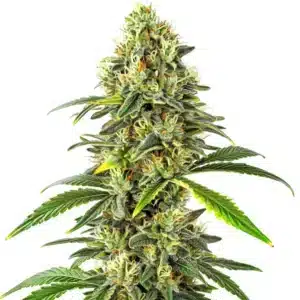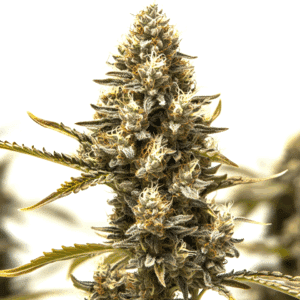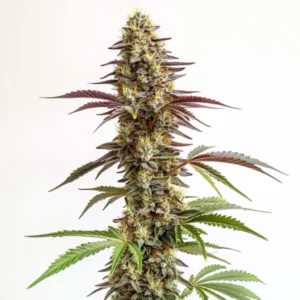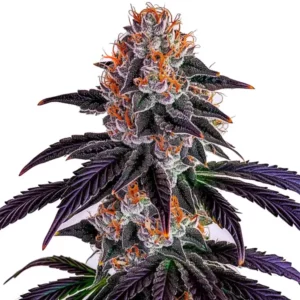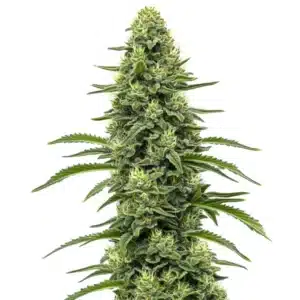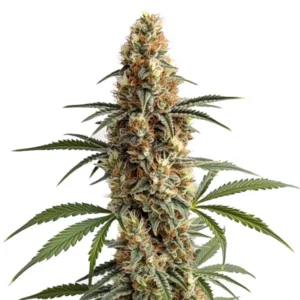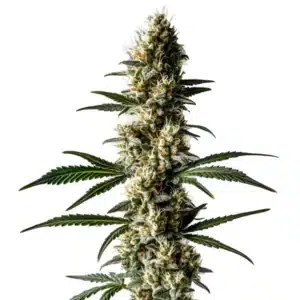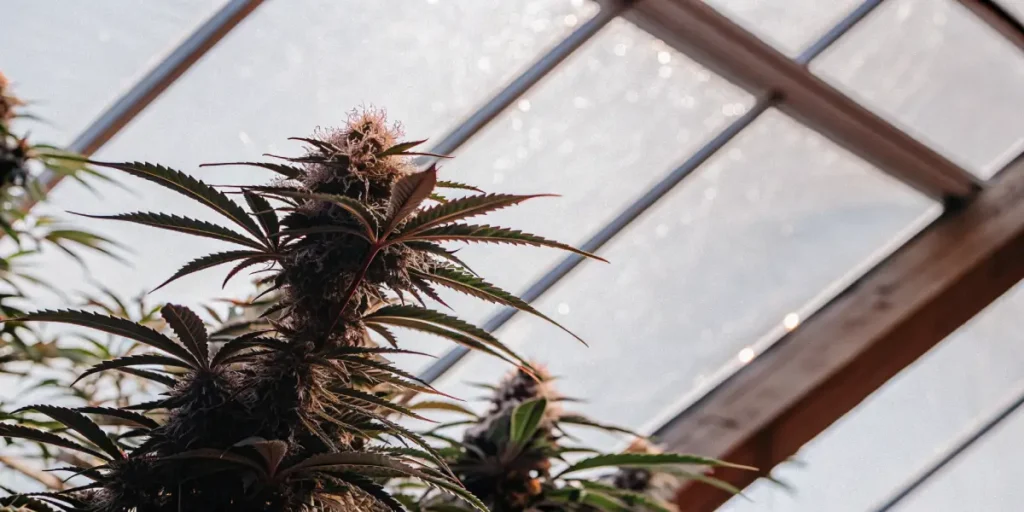
Nitrogen Assimilation Pathway in Cannabis
The nitrogen assimilation pathway in cannabis is a crucial element for those aiming to cultivate healthy and thriving plants. This pathway involves the conversion of nitrogen into a form that the plant can use to build proteins, nucleic acids, and other vital components. At its core, this process ensures that cannabis plants have the building blocks they need to grow robustly and produce high yields.
For first-time growers, understanding the nitrogen metabolism in cannabis cultivation may seem daunting. However, breaking it down into simpler terms can help. Essentially, nitrogen is absorbed from the soil through the roots and is then transported to different parts of the plant. This journey is facilitated by various enzymes and transporters that work together to ensure optimal nitrogen uptake and utilization.
Recommended Strains
Northern Lights
|
|
THC | 17% (Medium) |
|
|
Type | Feminized |
|
|
Yield | Medium |
|
|
Phenotype | 90% Indica / 10% Sativa |
Blue Dream
|
|
THC | 17% - 24% (Medium) |
|
|
Type | Feminized |
|
|
Yield | High |
|
|
Phenotype | 50% Indica / 50% Sativa |
Experienced growers know that the nitrogen assimilation efficiency in hemp is paramount to achieving a successful harvest. This efficiency can be influenced by several factors, including soil quality, environmental conditions, and the specific cannabis strain being cultivated. For instance, strains like Blue Dream, available at Blimburn Seeds, are known for their robust growth and high nitrogen requirements.
Nitrogen Metabolism in Cannabis Cultivation
In cannabis cultivation, nitrogen metabolism plays a vital role in plant development and yield. This process involves transforming nitrogen from its inorganic form in the soil to an organic form within the plant. Without this conversion, cannabis plants cannot synthesize the proteins and amino acids necessary for their growth.
For practical applications, growers can enhance nitrogen metabolism by ensuring their plants receive adequate nutrients. Using fertilizers rich in nitrogen is one way to achieve this. However, balance is key. Too much nitrogen can lead to excessive vegetative growth at the expense of flower production. Strains like Northern Lights, also from Blimburn Seeds, are known for their balanced growth when nitrogen levels are optimized.
The nitrogen assimilation pathway in cannabis is not only fundamental for plant growth but also for ensuring that the nitrogen is used efficiently throughout the plant’s development stages. This pathway integrates various biochemical processes that convert absorbed nitrogen into multiple forms, enabling the plant to thrive.
When growers focus on optimizing the nitrogen metabolism in cannabis cultivation, they often see improvements in both the health and yield of their plants. This includes observing more vigorous flowering and a robust structural formation, which are crucial for maximizing the plant’s potential.
Promos & Deals
Cannabis Nitrogen Uptake Mechanisms
The cannabis nitrogen uptake mechanisms are fascinating yet straightforward. Roots absorb nitrogen from the soil in the form of nitrate (NO3-) and ammonium (NH4+). These forms are then transported to the leaves where they are converted into amino acids and other organic molecules.
Growers can optimize these mechanisms by maintaining the right pH level in the soil, typically between 6.0 and 7.0. This ensures that nitrogen remains in a form that is easily absorbed by the roots. Additionally, regular monitoring of soil conditions can help prevent nutrient lockout, ensuring that plants like Gorilla Glue 4 from Blimburn Seeds have access to all the nutrients they need.
Knowing the cannabis nitrogen uptake mechanisms is crucial for tailoring nutrient schedules to meet the specific needs of each plant strain. By focusing on these mechanisms, growers can ensure that their plants receive the necessary nutrients at the right growth stages, enhancing overall plant health.
Advanced cultivation techniques often incorporate technologies such as hydroponics to further refine the nitrogen uptake process. These controlled environments allow for precise management of nutrient solutions, optimizing the nitrogen assimilation pathway in cannabis and leading to superior growth outcomes.
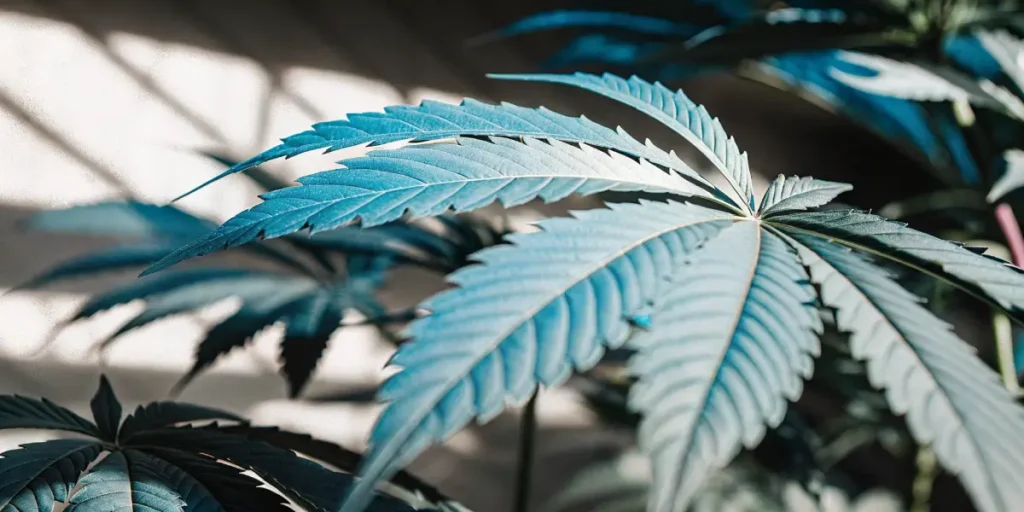
Role of Nitrogen in Cannabis Growth
Nitrogen is critical for cannabis growth, serving as a fundamental component of chlorophyll, the molecule responsible for photosynthesis. Without adequate nitrogen, cannabis plants exhibit stunted growth, yellowing leaves, and reduced yields.
Managing nitrogen levels is essential throughout the plant’s life cycle, from seedling to flowering. During the vegetative stage, cannabis plants require higher nitrogen levels for leaf and stem development. As they transition to the flowering stage, the demand for nitrogen decreases slightly, but it remains important for overall plant health.
The role of nitrogen in cannabis growth cannot be overstated, as it significantly impacts the plant’s ability to photosynthesize and produce energy. This energy is crucial for supporting various growth processes, including cell division and tissue expansion.
For growers, knowing the nitrogen assimilation efficiency in hemp can lead to more effective cultivation strategies. This involves not only providing the right amount of nitrogen but also ensuring that environmental conditions support optimal nitrogen uptake and utilization.
Nitrogen Assimilation Efficiency in Hemp
The nitrogen assimilation efficiency in hemp is a measure of how well the plant can convert absorbed nitrogen into useful compounds. This efficiency is affected by genetic factors, environmental conditions, and nutrient availability. Achieving high efficiency can lead to healthier plants and better yields.
To improve nitrogen assimilation efficiency, growers should focus on providing balanced nutrition and maintaining optimal growing conditions. Selecting the right strain is also crucial. For example, the Blue Dream strain from Blimburn Seeds is known for its high nitrogen assimilation efficiency, making it a popular choice among growers.
Enhancing nitrogen assimilation efficiency in hemp involves a deep understanding of both the plant’s genetic makeup and its cultivation environment. By selecting strains bred for high efficiency, growers can maximize their yield potential while minimizing resource input.
Advanced soil management techniques, such as using organic amendments and microbial inoculants, can further enhance nitrogen pathways in cannabis plants, ensuring that nitrogen is effectively transformed into essential biomolecules necessary for growth.
Nitrogen Pathways in Cannabis Plants
Nitrogen pathways in cannabis plants are the routes through which nitrogen travels from the soil to become part of the plant’s structure. These pathways are facilitated by enzymes and transport proteins that ensure nitrogen is efficiently absorbed and utilized.
Environmental factors, such as temperature and humidity, can influence these pathways. Growers can optimize nitrogen pathways by controlling their grow environment and providing consistent watering and feeding schedules. This ensures that plants like Northern Lights from Blimburn Seeds have the best chances of thriving.
The nitrogen assimilation pathway in cannabis is a complex series of reactions that require a delicate balance of nutrients and environmental conditions. By understanding these pathways, growers can adjust their cultivation practices to enhance nutrient uptake and plant health.
Efficient nitrogen pathways in cannabis plants are critical for sustaining growth and development, particularly during key developmental stages. By optimizing these pathways, growers can achieve higher yields and improved plant quality, making the most of their cultivation efforts.
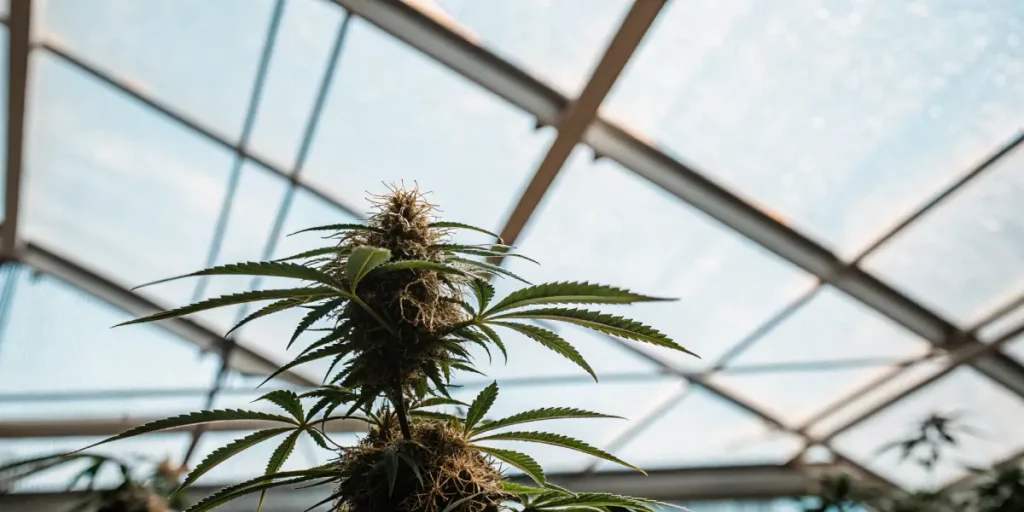
FAQs
What are the signs of nitrogen deficiency in cannabis plants?
Nitrogen deficiency in cannabis plants often presents as yellowing leaves, particularly the older ones at the bottom of the plant. This condition, known as chlorosis, occurs because the plant starts to redirect available nitrogen to newer growth, leaving older leaves lacking.
To address nitrogen deficiency, growers can apply a nitrogen-rich fertilizer. It’s essential to act quickly, as prolonged nitrogen deficiency can lead to stunted growth and decreased yields. Regular monitoring and balanced fertilization can help prevent these issues.
Early detection of nitrogen deficiency can prevent more severe growth issues and ensure a healthier yield. Regularly inspecting plants and knowing the symptoms can aid growers in making timely interventions, maintaining the health of the nitrogen assimilation pathway in cannabis.
Besides to fertilizer application, ensuring proper soil pH and moisture levels can also help mitigate nitrogen deficiency. These factors play a crucial role in the plant’s ability to absorb and utilize nitrogen effectively.
How can I improve nitrogen assimilation in my cannabis plants?
Improving nitrogen assimilation involves providing optimal growing conditions and balanced nutrition. Start by ensuring your soil has the right pH level, which facilitates nutrient uptake. Regular soil testing can help you adjust your fertilization strategy as needed.
Additionally, choose strains known for high nitrogen assimilation efficiency, such as Gorilla Glue 4 from Blimburn Seeds. These strains have been bred to make the most of available nutrients, supporting robust growth and high yields.
Incorporating organic matter into the soil can enhance microbial activity, which plays a vital role in the nitrogen metabolism in cannabis cultivation. This can lead to improved nutrient availability and plant health.
Advanced cultivation practices, such as using biochar or mycorrhizal fungi, can further support the nitrogen assimilation pathway in cannabis, promoting better nutrient uptake and utilization throughout the plant’s growth cycle.
Why is nitrogen important during the vegetative stage?
During the vegetative stage, cannabis plants require higher nitrogen levels to support the rapid growth of leaves and stems. Nitrogen is a key component of chlorophyll, which is vital for photosynthesis and energy production.
Providing adequate nitrogen during this stage ensures the plant develops a strong structure capable of supporting the abundant flowers that will form during the flowering phase. This sets the foundation for a successful harvest.
The role of nitrogen in cannabis growth during the vegetative stage is pivotal, as it supports vital processes that contribute to the plant’s overall vigor and resilience. Ensuring sufficient nitrogen intake during this phase can significantly impact the plant’s potential yield.
Knowing the cannabis nitrogen uptake mechanisms during the vegetative stage can help growers fine-tune their nutrient regimens, ensuring that plants have access to the necessary elements for optimal growth and development.
Can too much nitrogen harm my cannabis plants?
Yes, excessive nitrogen can lead to nutrient burn, characterized by dark green leaves and a burnt appearance at the tips. It can also cause plants to focus too much on vegetative growth, resulting in fewer flowers.
To avoid nitrogen toxicity, follow recommended feeding schedules and avoid over-fertilization. Adjust nutrient levels based on the plant’s growth stage and specific needs, ensuring a balanced approach to nutrition.
Managing the nitrogen assimilation efficiency in hemp is essential to prevent the adverse effects of over-fertilization. By closely monitoring plant health and adjusting nutrient levels accordingly, growers can avoid the pitfalls of excessive nitrogen.
Balancing the nitrogen levels not only supports healthier growth but also ensures that the nitrogen pathways in cannabis plants function optimally, leading to better overall plant development and yield outcomes.
Are there specific strains that require less nitrogen?
Some cannabis strains are bred for lower nutrient requirements, making them more forgiving for beginner growers. Strains like Northern Lights from Blimburn Seeds are known for their resilience and moderate nutrient needs.
These strains can thrive with less intensive feeding schedules, reducing the risk of nutrient-related issues. Choosing such strains can be beneficial for those new to cannabis cultivation or those looking to simplify their growing process.
Selecting strains with lower nutrient demands can also lead to cost savings in terms of fertilizer usage, while still maintaining a healthy nitrogen assimilation pathway in cannabis. This approach can be particularly advantageous in larger cultivation settings.
By knowing the specific nutrient needs of different strains, growers can tailor their cultivation practices to optimize the nitrogen metabolism in cannabis cultivation, leading to more efficient resource use and successful harvests.


